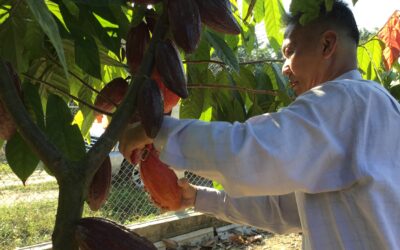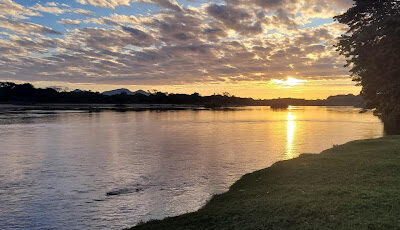During a recent visit to Mexico, our colleague Erika embarked on a journey to learn more about her country’s deep and proud cacao roots. Tag along with Erika on her discovery tour of Mexico’s rich cacao heritage. From Mexico City to Chiapas, we will follow the cacao trail through museums, archeological sites, quaint towns and our partner Finca La Rioja. Put on some sun screen and comfortable shoes, because it’s time to start moving!
On the trail of Mexican cocoa culture and heritage
Cacao has been intertwined with the history and heritage of my beautifully diverse and colorful home country of Mexico. Used for religious rituals and ceremonies, as medicine or as a means of payment by ancestral cultures, cacao is still very present in our rich culinary culture and our agricultural landscape. In the international scene, Mexican cocoa is nowadays represented by award winning producers whose premium beans are used in the kitchens of renowned chocolate makers, pastry chefs and chefs.
If you ever go to Mexico City and the states of Chiapas, Yucatán, Quintana Roo and others in the south of the country, you will most likely come across cacao-related food, products and images in shops and cafés. And in every single area, museums and archeological sites will offer you a window into the past and a grip on the significance of cacao to the peoples who settled in parts of what we now know as Mexico and parts of Central America.
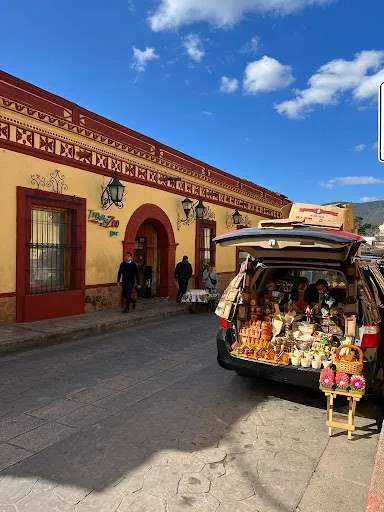
MEXICO CITY: MEXICAN NATIONAL MUSEUM OF ANTHROPOLOGY
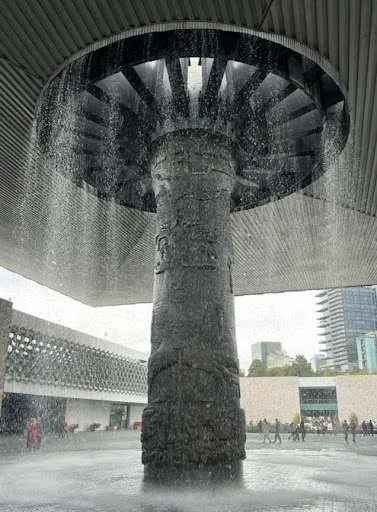
Our journey starts in Mexico City, in the National Museum of Anthropology. This impressive museum houses four square kilometers of exhibits containing the world’s largest collection of ancient Mexican art. As visitors saunter through the massive halls, they will sooner or later come across vast evidence of the role cacao played throughout the history of the Olmecs, Mayas, Aztecs, Mixtecs, Zapotecs and Toltecs. Pictures, icons, early markets trade representations and an endless collection of vases and pots give you a glimpse into these groups’ beliefs and customs.
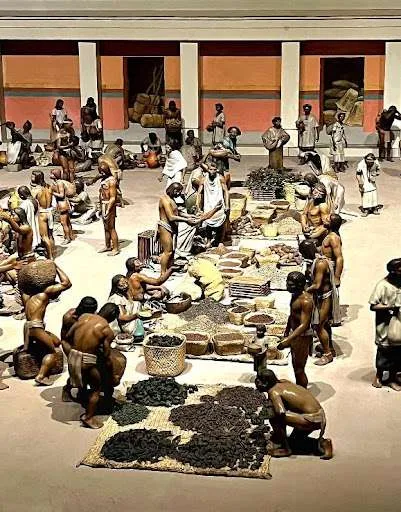
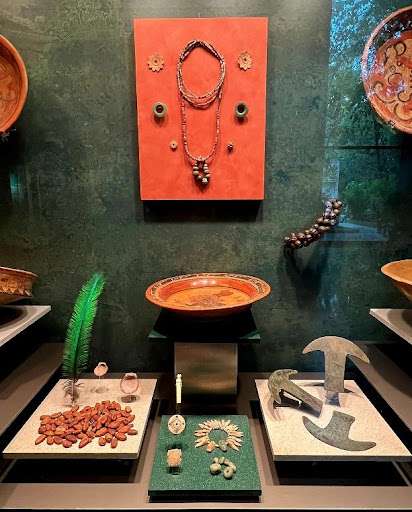
Cocoa beans were extremely valuable, exceeding the value of gold at times. In the archaeological site of Bonampak in Chiapas, an impressive mural depicts a vase which represented the 45,000 cocoa beans offered as tribute to the ruler of the city. Usually cacao was reserved only for consumption of the elite and royals of these cultures. Sometimes it would only be the men of these social segments who had access to it.
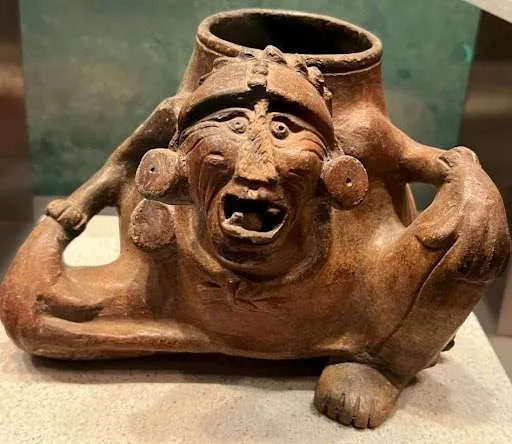
Some exhibits highlight the ritualistic uses of cocoa in these cultures. Cocoa was a central element in festivals and ceremonies such as the pre-Spanish Mayan baptism ritual; weddings where offerings to the gods were placed to ensure a woman’s fertility; and funerals, during which beautifully decorated vessels containing cacao and chocolate drinks were set in the tombs of the elite, to accompany them and give them energy in their journey to the afterlife.
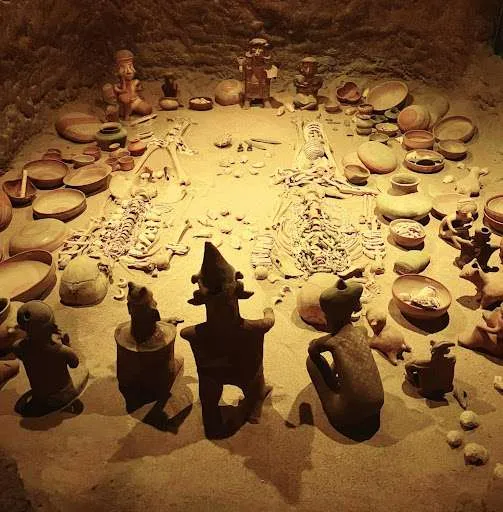
According to Mayan and Olmec creation myths, the gods found the cacao tree in the “Mountain of Sustenance” in paradise. It was then that the feathered-serpent god Quetzalcoatl took the tree and presented it to his people to feast from it, so that they would be healthy and strong. In some versions we hear as well that the gods of water, love and beauty were involved so that the seeds would grow and have beautiful flowers from which the cocoa pods would develop.
Mexico City also houses the wonderful and whimsical MUCHO – the Museo del Chocolate. In a next instalment of our Cocoa Stories, I will take you on my unforgettable trip to this little gem of a museum dedicated to promoting knowledge, traditions and the Mexican cacao culture.

CHIAPAS
Our travels through Mexico led us on towards Chiapas, where we spent a couple of days at Finca La Rioja and took some days off to further explore this historical cocoa region.
José María kindly welcomed us at his beloved plantation which we had so many times seen in videos and pictures. It was the first time I visited a plantation and I was not disappointed! The trees were bearing healthy fruit after a difficult period of disease last year. Porcelana beans were drying in the sun on wooden trays – finally some sun after a challenging period of extended rains. It takes patience, love and above all a lot of perseverance and hard work to produce cocoa beans under such challenging circumstances. This one bag is filled not only with award winning cocoa beans but with so much more…
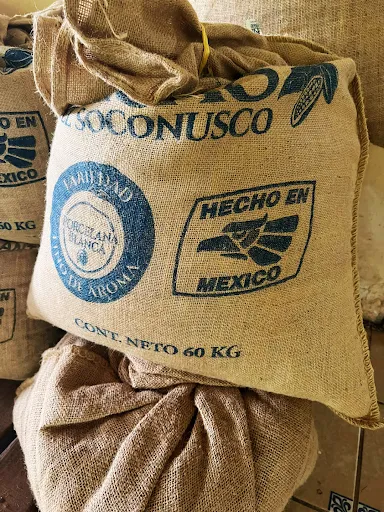
Our next stop is Palenque – a Maya city state that perished in the 8th century and which is considered to contain some of the finest examples of Mayan architecture and art that was ever produced. Our local guide started the tour by narrating the sacred history of creation according to Mayan belief. Gods made men out of a mixture of corn paste and cacao. There were two first failed attempts: a mixture of corn paste and wood which was too rigid and a mixture of corn paste and mud which would break after drying out. It was only the last one, the one mixed with cacao, which allowed them to breathe life into it. And there we were, the human race.
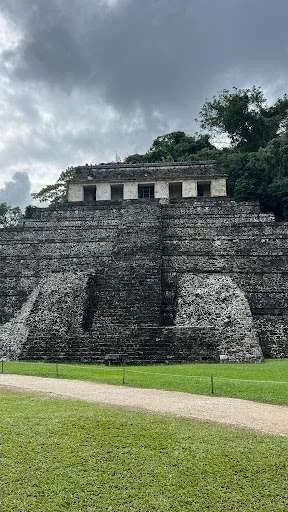
This mythical and symbolic association of cacao with maize lives on in many drinks and dishes. Pozol is a drink which mixes fermented corn dough and cocoa. It’s served cold and it’s considered a thirst-quencher that gives energy. Some even believe that it has medicinal properties, drinking it to fight diseases. Either way, we found it delicious and refreshing!
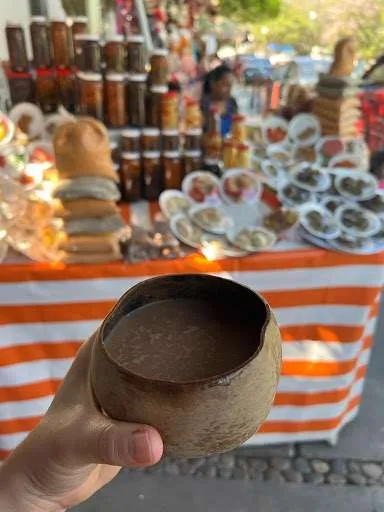
While exploring the enchanting town of San Cristóbal de las Casas we came upon constant reminders of the way cacao and cocoa are still part of the local culture. A store proudly displayed a jewellery collection based on cacao: the tree, the fruit, the open pods and different artifacts used to store or serve cacao. Further on, we encountered a hot cocoa store, with wonderful vases and cocoa pictures as decoration. At a coffee shop the benefits of cocoa were shared with its guests: anti-inflammatory, stabilizes blood pressure, reduces stress, improves blood circulation…each and all of them good reasons to keep consuming it!
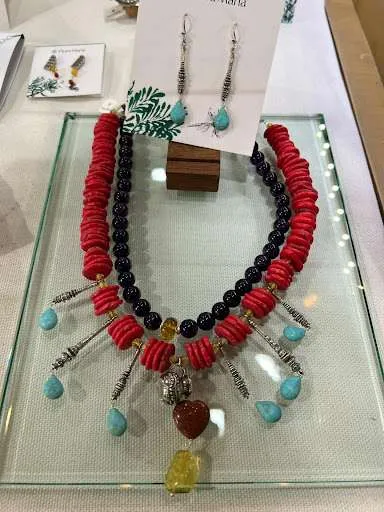
We were happily surrounded by cacao, its different products and its history. And we are equally happy to be able to share all these experiences as one of our Cocoa Stories. Our cocoa journey continues to inspire and surprise us. Who knows where it will take us next. There is always something else to discover, it’s always just around the corner.

Want to learn more about the places we visited? Check out these links:
Museo Nacional de Antropología de México
